#cinestill-esque
Text
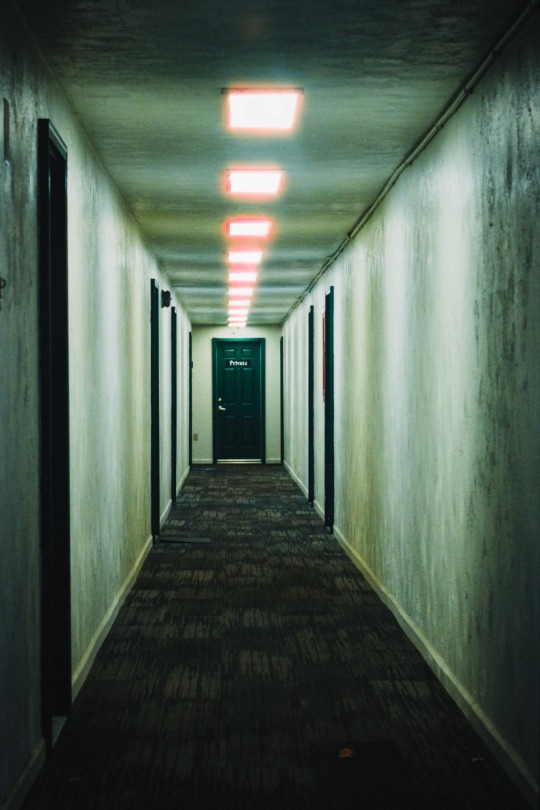
The Hall
#photography#aes#lofi vibes#dark aesthetic#lofigrapher#filmvibes#fujixclub#fuji xt20#nikkor#liminal vibes#liminal art#liminal spaces#the backrooms#Backrooms#cinestill-esque#hotels and motels#grain
36 notes
·
View notes
Text

Long Island City. Saw a Ghibli-Esque couple crossing the street. Shot by me on Cinestill 800t.
8 notes
·
View notes
Photo
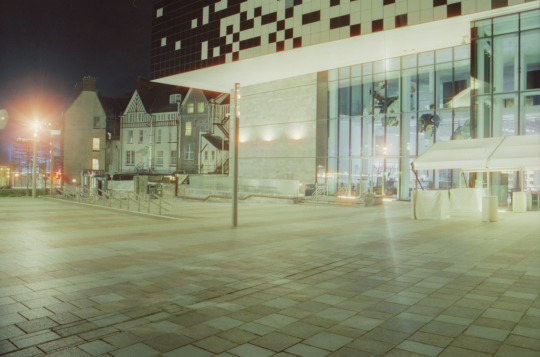
Getting Back into Creating
One thing that is always difficult is getting back into the swing of creating when there has been a hiatus. I have always found it hard to begin again, even if said hiatus isn’t as long as it is perceived. This goes for the short break from ending PHOT303 in the BA and starting 101 in the MA - which was only a few months.
Originally, I wanted to continue on with Mileage May Vary as my Postgraduate work, because it lead on from my previous work, as well as my written dissertation from third year. Yet, with some thinking, I didn’t feel right to continue that project within the academic setting once again and decided to keep that body of work personal. I then had to think about what I wanted to do for 101, and what could work for me in a higher level of education.
Previously mentioned is my next body of work: Epochal Territories. This is the continuation of PHOT201′s Alienated Spaces, which was the documentation of urban scenes with the hidden subtext of alienation felt with a Capitalist society. Epochal Territories is set to expand upon that, with more in-depth research, contextuality and photographic practice. In a sense, it is the follow on from that project and more so.
Moving on, this post is more about how I concluded to that decision and what I created to end up where I am now. At the start of the MA, I didn’t really know what road to take - do I continue on with a project, revisit something I am passionate about or make something totally new?

Shooting at night is something I thoroughly enjoy, but with film it is something I hadn’t properly undertaken with long exposures. Firstly, I decided to shoot with a Bronica ETRS which I later found out was not a camera designed for shooting at night and is incredibly idiosyncratic. It has to have a whole step by step procedure to create an exposure that is longer than 8 seconds which doesn’t make any sense, and makes me think why Bronica didn’t bother with a usual bulb mode. It goes like this:
1. On the lens, unscrew the switch where A and T are with a flathead screwdriver.
2. Now that the screw is loosened (not removed), Move the switch to T or time exposure which keeps the shutter open until you switch it back to A.
3. Compose and set the aperture and meter.
4. Fire the shutter for how long the exposure needs to be.
5. Once you have achieved your shutter speed length, cover the lens with either the lens cap or a dark card, and then switch it back to A.
6. Now you can advance the film and repeat.
So yes, it is a complete ordeal which I am not a particular fan of, not one bit. A lot of the frames were ruined because of trying to reapply the lens cap to flick the switch. The ETRS really wasn’t intended to be used for long exposures, but the camera can do exposures up to 8 seconds, which isn’t an issue until they get longer. To over come this, you can always switch it to multiple exposure mode and apply as many exposures as needed to complete the exposure.
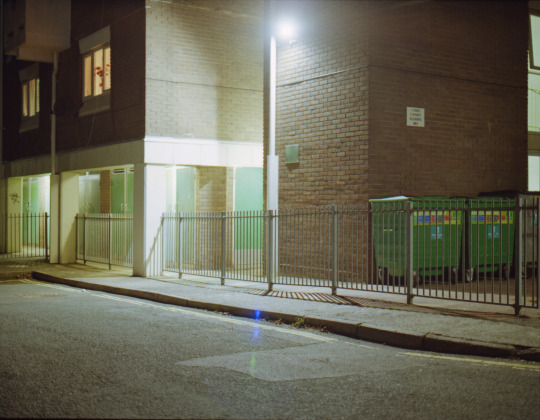

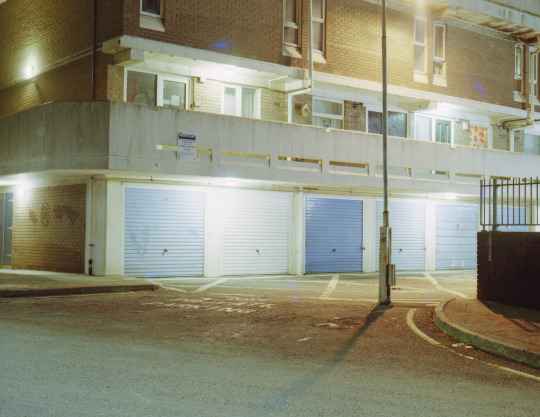
I also chose an odd film to shoot at night, which was Kodak Ektar 100. This film is famed for it’s saturation, sharpness and extremely fine grain - it is about as slide film-esque as a negative film can be. I have had a tumultuous relationship with Ektar in the past, as I haven’t been able to scan it how I would like it, and I always end up avoiding it like the plague. Yet somehow at night, it really shines. The saturation is a lot more subdued and becomes much more flat in terms of it’s tonality, yet still retaining it’s lush colours and sharpness.
There is also a mixture of projects happening from this role, as it was where I felt I was at the crossroads of projects, with a mixture of Mileage May Vary and what it is Epochal Territories. Eventually, I chose the latter because it is closer to what I am feeling within the zeitgeist, especially in the times on COVID-19. My own feelings of alienation are a lot more pronounced and prevalent today than they were when working on MMV, so it makes sense to go back to this body of work.

A number of days later, I chose to shoot a camera and film stock I am a lot more familiar with. The Canon EOS-1 is my go-to 35mm SLR because of it’s nature of being a professional grade SLR, and the ability to use the same lenses as my digital camera. I also chose to shoot Cinestill 800T, which is a staple for nighttime photography. 800T is just a rebranded and reworked version of Kodak Vision T, with the remjet layer removed so it can be developed at any C41 or easier at home, and this also creates some serious halation on the highlights, beaming out a red glow where the light it at it’s brightest. The EOS-1 is also a lot easier to use as it was made to be a jack of all trades for professional photographers in the early 1990′s.

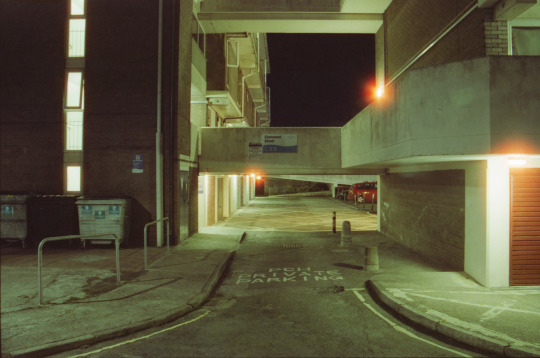

The EOS-1 was paired with a 28-135mm USM which is a good all-round lens that covers most useful focal lengths at apertures from F3.5 at 28mm and F5.6 at 135mm. The lens was stopped down to F8-11 with exposure times ranging from 4-15 seconds depending on the ambient light, with each exposure being metered with a Minolta Auto Meter III and the corresponding exposures being overexposed by a stop or two.
With the roll of Cinestill, I wanted to capture the desolation of the city at night which is unsettling compared to the usual hustle and bustle of the day, and especially pre-covid. The spaces are meant to be completely devoid of any persons, with the semiotic of being detracted from everyone else placed within the frame by the inherent desolate nature of the image. It was with this roll of film I decided this was the route I would like to take, because it feels a lot more relevant not only to our times, but also my life. My photographs would be direct documentations of our epoch, hence Epochal Territories.
This is what separates Alienated Spaces from Epochal Territories, is that the former was more aimed towards myself, where the latter is aimed towards myself but also our everyday life within supermodernity causing the alienation of which I feel.
Where does this leave me? Well, this means that I can keep a project do undertake within my own time, and one to work on within a more academic setting. This also means that I can explore the relation between the non-place, and the alienation that stems from our hypermodernity, in addition to explore more areas of Plymouth and it’s surrounding areas more thoroughly (depending on the lockdown regulations as of late 2020/early 2021). I plan on reading Francis Fukuyama’s The End of History and the Last Man, where Fukuyama states that our zeitgeist has got to a point where supermodernity has slowed down history with any lack of significance, and mankind has reached it’s endpoint and almost at our final form. This book was mentioned by Mark Fisher in his text Capitalist Realism, Fisher explains it is easier to imagine the end of time compared to an alternative to Capitalism. Fukuyama’s text should prove insightful and go towards the further understanding of how we live today, and why our epoch is particularly alienating - which shall be answered in time.
0 notes
Photo

PHOT202 “Manifesto” - 29/3/2019 Shoot & Contact Sheet
Fog covered the city - a thick blanket was laid over the concrete jungle that is Plymouth, and me and Aaron decided to shoot around the city and take advantage of the interesting weather situation. To do this, I used my Canon 5D as well as my 50mm F1.8 STM. Since it was encroaching on 1am, I also used my tripod to steady the somewhat long exposures.
The exposure times were rather surprising: ISO 100, F2.2 and ranging from 1/10s to 1s. Thankfully, having a wider aperture shortens the exposure time exponentially. Also the wide aperture with a long exposure changes the DOF - where it’s expected to be a narrow DOF, the longer exposure time changes the DOF to be much wider than it would be with a quicker shutter speed. I tend to stick to this aperture, as it’s still decently wide but it’s also a lot sharper than it is wide open at F1.8 on this particular lens.
We started at the large roundabout that links Saltash Road with Coburg Street and Western Approach. This is also where Beckley Point is situated, where the building looked rather Blade Runner-esque. The main intent of this shoot was just to explore and take advantage of this ‘freak’ fog coverage. There wasn’t an intent to include this with PHOT202, but as ‘Manifesto’ focuses on my own personal intrigue with the everyday banality with a lesser detail on the contextual theory, and the nuances of the mundane. I initially wanted to shoot this for my own personal reasons, and to shoot something for me, rather than shooting for a project - but it made more sense to use it as it was more of an experimentation as I have never shot in such conditions before.
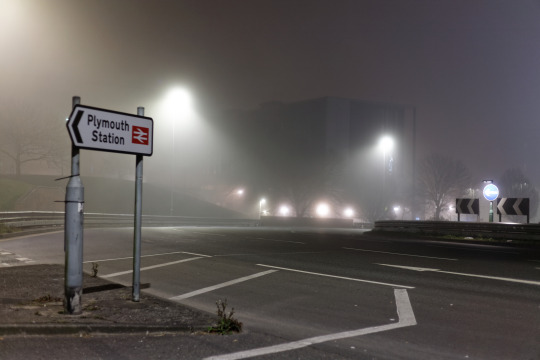
The light dispersed through the fog with an almost ethereal way. There is something oddly refreshing about shooting out of ones comfort zone - such as shooting in the freezing fog at 1am. It reminded me of an old DigitalRev TV episode where Kai went out to the streets of Hong Kong in the early hours of the morning to shoot the city in a different light...which can be seen here. It was a breath of fresh air whilst shooting, as ‘Manifesto’ has been the hardest project to shoot, despite it being so open/broad. The project has changed from documenting the non-place, to documenting the subtle nuances of the mundane banality. It went from complex philosophy and anthropology of the non-place, to leaning away from contextually lead practice. From this, I have learned that having little contextual backing with one’s work is rather hard. I find it rather difficult to shoot without an ulterior practice. And with this rather experimental take on my own practice to take a step away from a more head focused project, it’s been incredibly hard to shoot. It shows to me that I need that contextual backing to reinforce my work to make it successful.
So far, Manifesto has taken shape into a documentation of the everyday and my own personal intrigue within it. There is very little philosophy/anthropology attached to it, and focuses more on the aesthetics of the image, rather than the head focused study that usually is attached to my work. It manages to keep the similar dead-pan, banal aesthetic of my usual craft, but it takes a step back in terms of having a contextual backing (which written previously has been hard to execute).
Whilst this was a distancing subject to what I am used to shooting, it was good to stretch my own knowledge in terms of my own photography. This project is certainly a learning curve when it comes to me own practice, as previously it has questioned how I even create what it is that I create. It’s made me think about how I can create work, and what I need to succeed with it. I do however have ideas for another project, which has been sprinkled in ever so slightly with this ‘Manifesto’ work. This however, will be disclosed in another post where the context is more suited. It will serve the basis of my third year work, photographically and relating to the dissertation.

The fog caused some interesting effects when it came to the lighting of the subjects. Here, Beckley Point looks like a set from Blade Runner - and I can almost here the Vangelis soundtrack when looking at this image. Beckley is a rather interesting building, as during the day it looks rather boring from my standpoint. But at night, it really stands out. The lights on the side glow through the night, and the fog manages to extenuate the glow. The lights are rather cool, but I decided to cool down the image and make them almost tungsten in terms of white balance. I am a big fan of tungsten light, and an even bigger fan of Cinestill 800T (Kodak Vision 3 film for C41), so being able to replicate the WB is always great on a digital format...although the halation is harder to fake on digital. This image steps away from the usual banal space documentation and almost goes back to the latter stages of Alienated Spaces, where architecture was mainly being focused upon with the Blavatnik Building and the Barbican Centre.

The fog was almost haunting, like it was a scene from Silent Hill. The dense coverage obscured my vision at times - hearing voices in the densely fogged city without seeing anybody was rather unnerving at times. Thankfully I wasn’t there by myself and all was safe. This shot mainly focuses back to the banal settings of everyday, and how the light plays with the road signs as luminescent obstacles. There is just something so haunting about the thick layer of fog that settled upon the city. The lights became obscured by the small particles of water and the quietness of the 2am streets distilled an unsettling ennui.
A coda. Somehow shooting just for personal gain turned into images for Manifesto. I also made the realisation that stepping away from a contextual backing to my work was a bad idea. Without the backing, my work has suffered rather badly, to the extent where I find it hard to actually go out and shoot anything photographic. Also shooting in challenging conditions at the ungodly hour, reminding me of the inspirations of old DRTV videos reminded me that I enjoy just going out and taking images. I somehow made it work in terms of this project as well, as I do tend to stick to the same subject matters.
0 notes